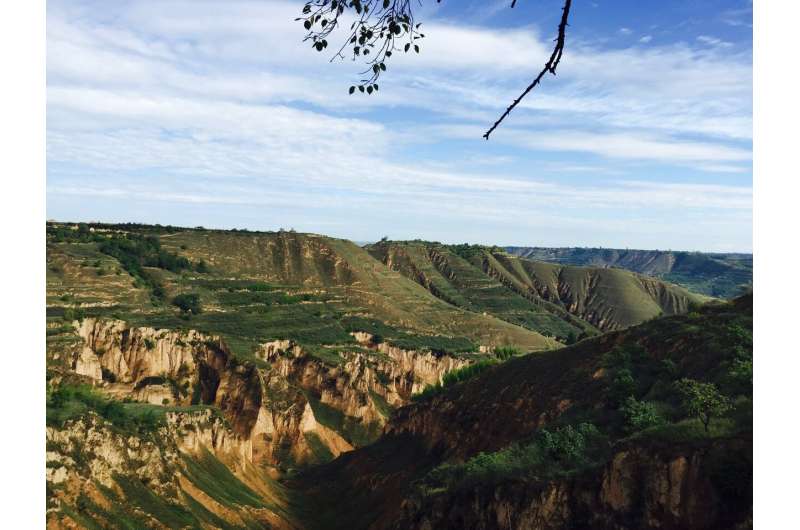Humankind did not live with a high-carbon dioxide atmosphere until 1965

Humans have never before lived with the high carbon dioxide atmospheric conditions that have become the norm on Earth in the last 60 years, according to a new study that includes a Texas A&M University researcher.
Titled "Low CO2 levels of the entire Pleistocene Epoch" and published in Nature Communications today, the study shows that for the entire 2.5 million years of the Pleistocene era, carbon dioxide concentrations averaged 250 parts per million. Today's levels, by comparison, are more than 410 parts per million. In 1965, Earth's carbon dioxide atmospheric concentrations exceeded 320 parts per million, a high point never reached in the past 2.5 million years, the study shows.
"According to this research, from the first Homo erectus, which is currently dated to 2.1 to1.8 million years ago, until 1965, we have lived in a low-carbon dioxide environment—concentrations were less than 320 parts per million," said Yige Zhang, a co-author of the research study and an assistant professor in the Department of Oceanography in the College of Geosciences. "So this current high-carbon dioxide environment is not only an experiment for the climate and the environment—it's also an experiment for us, for ourselves."
Carbon dioxide is a greenhouse gas that contributes to the warming of Earth's atmosphere, and is considered a driver of global climate change, Zhang said.
"It's important to study atmospheric CO2 (carbon dioxide) concentrations in the geological past, because we know that there are already climate consequences and are going to be more climate consequences, and one way to learn about those consequences is to look into Earth's history," Zhang said. "Then we can see what kind of CO2 levels did we have, what did the climate look like, and what was the relationship between them."
Jiawei Da, Xianqiang Meng and Junfeng Ji, all of Nanjing University in China, and Gen Li of the California Institute of Technology co-authored the research.
The scientists analyzed soil carbonates from the Loess Plateau in central China to quantify ancient atmospheric carbon dioxide levels as far back as 2.5 million years ago. Climate scientists often use ice cores as the "gold standard" in physical climate records, Zhang said, but ice cores only cover the past 800,000 years.
Analyzing Paleogenic carbonates found in the ancient soil, or paleosols, from the Loess Plateau, the scientists reconstructed the Earth's carbon dioxide levels.
"The Loess Plateau is an incredible place to look at aeolian, or wind, accumulation of dust and soil," Zhang said. "The earliest identified dust on that plateau is from 22 million years ago. So, it has extremely long records. The layers of loess and paleosol there contain soil carbonates that record atmospheric carbon dioxide, if we have very careful eyes to look at them."
"Specifically, carbonates formed during soil formation generally reach carbon isotopic equilibrium with ambient soil CO2, which is a mixture of atmospheric CO2 and CO2 produced by soil respiration," said Nanjing University's Jiawei Da. "Through the application of a two-component mixing model, we can reconstruct paleo-CO2 levels using carbonates in fossil soils."
Using those materials and the techniques, the researchers constructed a carbon dioxide history of the Pleistocene.
"Our reconstructions show that for the entire Pleistocene period, carbon dioxide averaged around 250 parts per million, which is the same as the last 800,000 years' values," Zhang said.
"Our paleosol-based CO2 estimates are in line with snapshots of early-Pleistocene CO2 retrieved from Antarctic old, blue ice, suggesting that the Earth system has been operating under low CO2 levels throughout the Pleistocene," said Junfeng Ji of Nanjing University.
We evolved in a low-carbon-dioxide environment, Zhang said, and how humans will evolve and be affected by today's carbon-dioxide levels is yet to be seen.
More information: Jiawei Da et al, Low CO2 levels of the entire Pleistocene epoch, Nature Communications (2019). DOI: 10.1038/s41467-019-12357-5
Journal information: Nature Communications
Provided by Texas A&M University



















